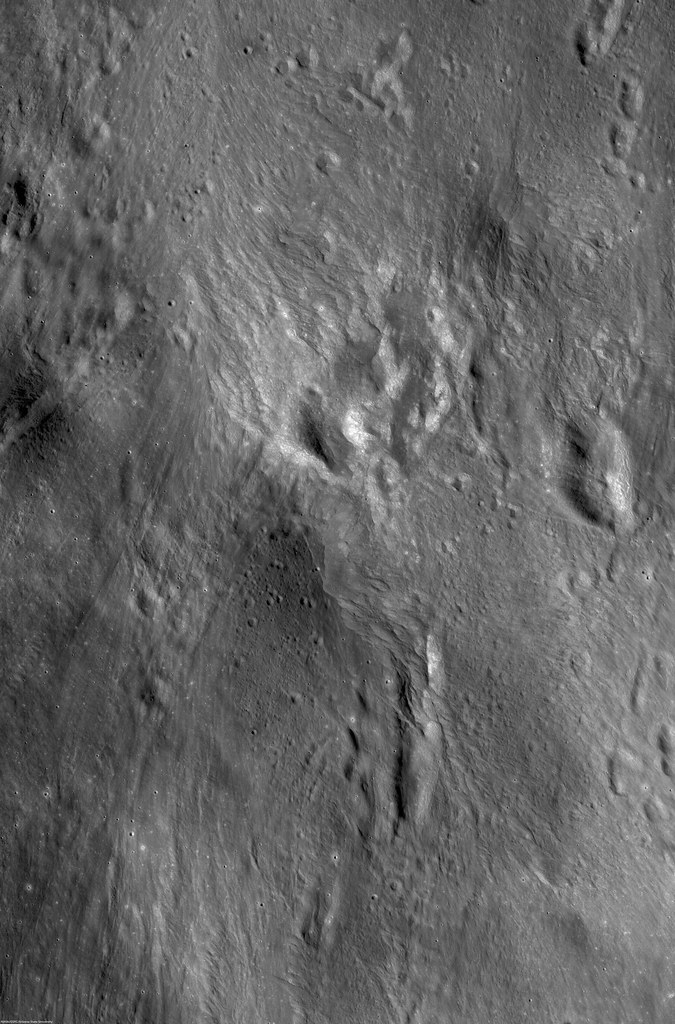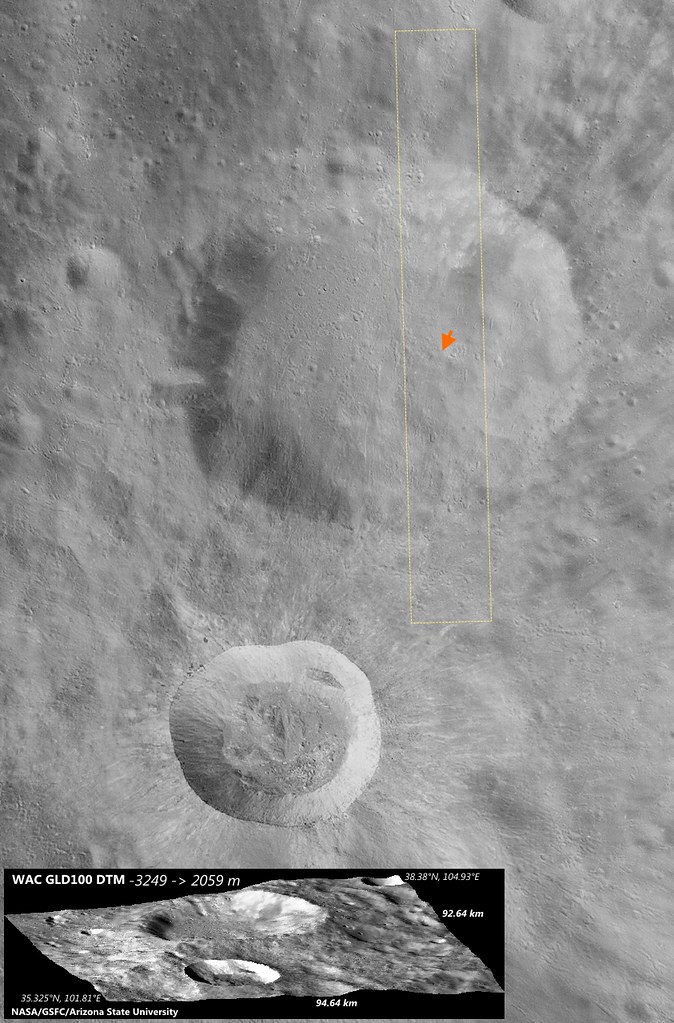 |
| The scoured floor of Harkhebi J (43.1 km; 37.418°N, 103.356°E), near the young crater Giordano Bruno. Ejecta from Giordano Bruno flowed across the surface, leaving a record for us today. A 1570 meter-wide field of view from LROC NAC observation M1128791817L, LRO orbit 18492, July 18, 2013; incidence 60.58° resolution 1.35 meters, from 103.62 km over 37.52°N, 103.7°E [NASA/GSFC/Arizona State University]. |
LROC News System
Giordano Bruno, the 22 km crater whose ejecta drapes Harkhebi J, is at most 10 million years old. Because these features are so young, they are preserved almost as though the ejecta ray landed here yesterday.
The Featured Image location is approximately 5 crater radii (55 km) away from the impact center, but the effects of the original impact are clearly visible; the momentum from the ejecta is visible as striations in the western half of the image.
The Featured Image location is approximately 5 crater radii (55 km) away from the impact center, but the effects of the original impact are clearly visible; the momentum from the ejecta is visible as striations in the western half of the image.
The ejecta was traveling upwards of 600 km/hr when it began to etch the surface, and when the materials finally came to rest, the evidence of the original motion was frozen in time.
 |
| Scaled and corrected 4.912 km-wide field of view from LROC NAC observation M1128791817L, July 18, 2013. View the full-resolution mosaic HERE [NASA/GSFC/Arizona State University]. |
 |
| Context for the LROC Featured Image released August 20, 2014. Footprint of LROC NAC observation M1128791817L. LROC WAC observation M121532675C, LRO orbit 3044, February 23, 2010; incidence 49.3° at 76 meters resolution, from 54 km [NASA/GSFC/Arizona State University]. |
View full-resolution LROC NAC mosaic, HERE.
Related Posts:


No comments:
Post a Comment